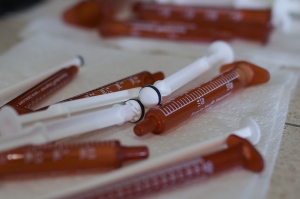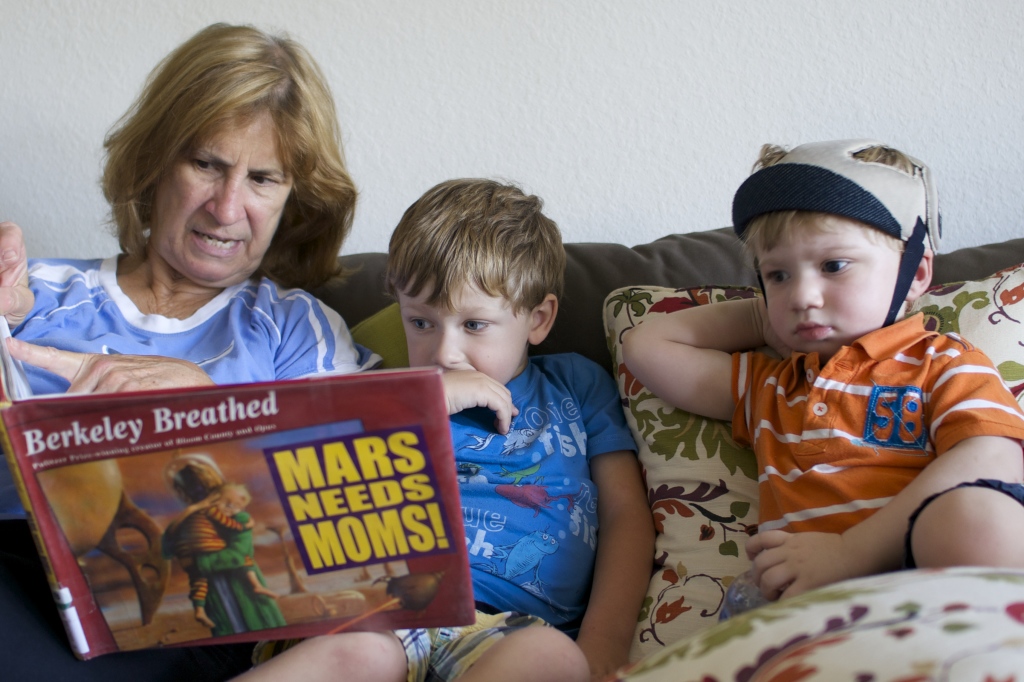It has been over a week since we left the hospital. Life at home has been a whirlwind of medications, emesis, and deja-vu sleep training. Luckily, it has also been a lot of fun loving family time. It’s so great to be home and to be together. I missed having Connor walk into our bedroom in the morning and jump into our bed.
We have Clark’s blood tests done every Monday and Thursday. The labs are drawn from home, through Clark’s broviac. This is not new for us, since we were doing Clark’s labs for months before his BMT. The only pain with drawing labs at home, is bringing the blood into the labs and having to bring the boys with me (where sick people are everywhere!) . Thankfully our insurance covers us to have a home nurse for 100 visits during the year. So now we have a lovely nurse draw Clark’s labs for us, and she also takes them into the lab!
This was an exciting week for us as we watched Clark’s test results. To give you a better understanding, here is a “Before and After” picture;
Before
- Platelets – would drop down to 0 when we let them fall. Clark was getting platelet transfusions weekly before BMT, and every 3 days during.
- Hemoglobin – was constantly dropping. He was being transfused if his numbers fell below 8.0. Transfusions were approximately every 4 weeks before BMT, and every 5 days during.
- ANC – Clark hovered around 500 before BMT (max we ever saw was 1000), and dropped to 0 during the BMT.
- Lymphocytes – Clark was in the high- normal range, hovering around 65%.
After
- Platelets – As of Thursday, his platelets are 194,000! This is considered normal, and Clark is now safe to ride a bike! Damn, we have to buy Clark a bike!!
- Hemoglobin – We are still watching this. It is possible that his Hgb is rising, considering his last 3 tests showed a slight increase from 8.2 up to 8.7. He has not needed a transfusion since being home.
- ANC – Thursday, Clark’s ANC was 3195! This is sooo incredibly wonderful since the “normal” range is 2000- 8000.
- Lymphocytes – These are very low, as expected, since the lymphocytes are what the chemo was trying to kill. Clark is at 8% right now. It will take a long time for these to come back.
An then we got more good news. The plan was for Clark to see the doctor on a weekly basis… but he is doing so well, that they told us we can skip the next couple of weeks! His next appointment is October 6th, when he needs to come in for his monthly IVIG. IVIG is a plasma protein with antibodies to help Clark fight off infection. He will need to take this until he is able to build his own antibodies.
And, not only do we get to “skip” 3 appointments, but Clark was also taken off TWO of his daily medications! He no longer needs Ursidiol (to protect his liver), or his blood pressure medicine. Clark is also being tapered off of his Cellcept. This is one of the toughest meds to give, because it is given every 8 hours.
So much good news! All in all, we are getting closer and closer to “normal”… Or at least a new “normal”. It will be great to get to the point we can actually take a family vacation. We’re LONG overdue for one of these!



















